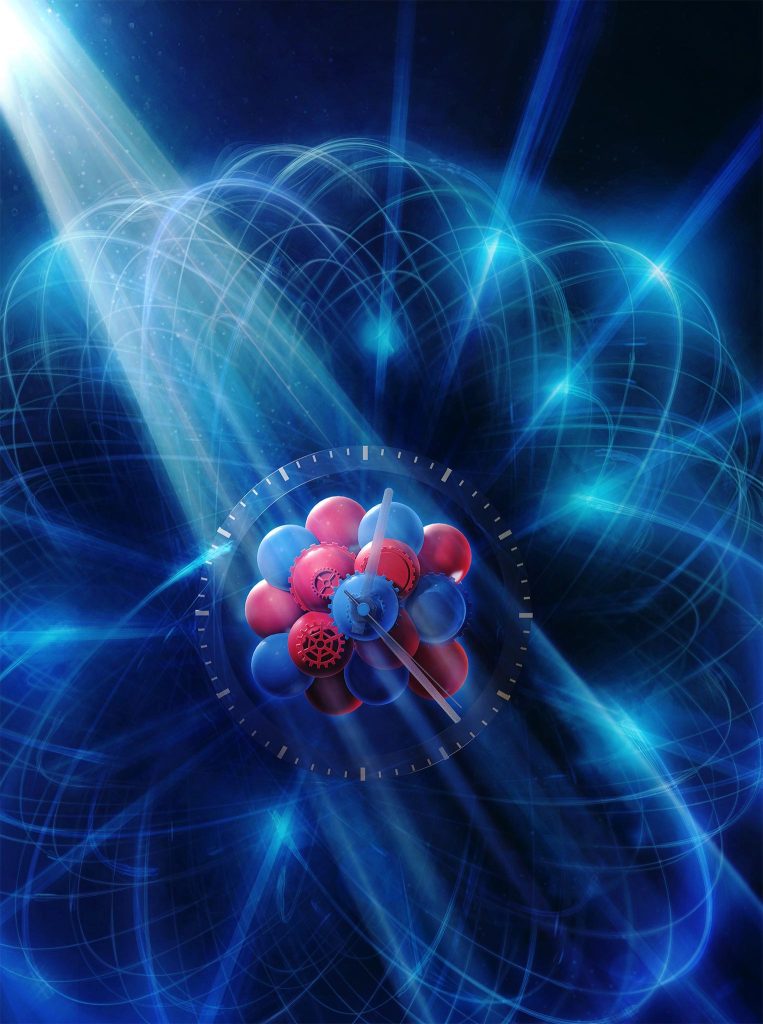
An artist’s rendition of the scandium nuclear clock: scientists used the X-ray pulses of the European XFEL to excite in the atomic nucleus of scandium the sort of processes that can generate a clock signal – at an unprecedented precision of one second in 300 billion years. Credit: European XFEL/Helmholtz Institute Jena, Tobias Wüstefeld/Ralf Röhlsberger
X-ray laser shows a possible route to substantially increased precision time measurement.
An international research team has taken a decisive step toward a new generation of atomic clocks. At the European XFEL X-ray laser, the researchers have created a much more precise pulse generator based on the element scandium, which enables an accuracy of one second in 300 billion years – that is about a thousand times more precise than the current standard atomic clock based on cesium. The team presented its success on September 27 in the journal Nature.
Current Atomic Clock Mechanism
Atomic clocks are currently the world’s most accurate timekeepers. These clocks have used electrons in the atomic shell of chemical elements, such as cesium, as a pulse generator in order to define the time. These electrons can be raised to a higher energy level with microwaves of a known frequency. In the process, they absorb the microwave radiation.
An atomic clock shines microwaves at cesium atoms and regulates the frequency of the radiation such that the absorption of the microwaves is maximized; experts call this a resonance. The quartz oscillator that generates the microwaves can be kept so stable with the help of resonance that cesium clocks will be accurate to within one second within 300 million years.
Challenges and Solutions
Crucial to the accuracy of an atomic clock is the width of the resonance used. Current cesium atomic clocks already use a very narrow resonance; strontium atomic clocks achieve a higher accuracy with only one second in 15 billion years. Further improvement is practically impossible to achieve with this method of electron excitation. Therefore, teams around the world have been working for several years on the concept of a “nuclear” clock, which uses transitions in the atomic nucleus as the pulse generator rather than in the atomic shell. Nuclear resonances are much more acute than the resonances of electrons in the atomic shell, but also much harder to excite.
Breakthrough With Scandium
At the European XFEL, the team could now excite a promising transition in the nucleus of the element scandium, which is readily available as a high-purity metal foil or as the compound scandium dioxide This resonance requires X-rays with an energy of 12.4 kiloelectronvolts (keV, which is about 10,000 times the energy of visible light) and has a width of only 1.4 femtoelectronvolts (feV). This is 1.4 quadrillionths of an electronvolt, which is only about one-tenth of a trillionth of the excitation energy (10-19). This makes an accuracy of 1:10,000,000,000,000 possible.
“This corresponds to one second in 300 billion years,” says DESY researcher Ralf Röhlsberger, who works at the Helmholtz Institute Jena, a joint facility of the GSI Helmholtz Centre for Heavy Ion Research, the Helmholtz Zentrum Dresden-Rossendorf (HZDR), and DESY.
Applications and Future Potential
Atomic clocks have numerous applications that benefit from improved accuracy, such as precise positioning using satellite navigation. “The scientific potential of the scandium resonance was identified more than 30 years ago,” reports the experiment’s project leader, Yuri Shvyd’ko of Argonne National Laboratory in the United States.
“Until now, however, no X-ray source was available that shone brightly enough within the narrow 1.4 feV line of scandium,” says Anders Madsen, leading scientist at the MID experiment station at the European XFEL, where the experiment took place. “That only changed with X-ray lasers like the European XFEL.”
In the groundbreaking experiment, the team irradiated a 0.025-millimeter-thick scandium foil with X-ray laser light and was able to detect a characteristic afterglow emitted by the excited atomic nuclei, which is clear evidence of scandium’s extremely narrow resonance line.
Also important for the construction of atomic clocks is the exact knowledge of the resonance energy – in other words, the energy of the X-ray laser radiation at which the resonance occurs. Sophisticated extreme noise suppression and high-resolution crystal optics allowed the value of the scandium resonance energy in the experiments to be determined to within five digits of the decimal point at 12.38959 keV, which is 250 times more accurate than before.
“The precise determination of the transition energy marks a significant progress,” emphasizes the head of the data analysis, Jörg Evers of the Max Planck Institute for Nuclear Physics in Heidelberg. “The exact knowledge of this energy is of enormous importance for the realization of an atomic clock based on scandium.”
The researchers are now exploring further steps toward realizing such an atomic nuclear clock.
“The breakthrough in resonant excitation of scandium and the precise measurement of its energy opens new avenues not only for nuclear clocks, but also for ultrahigh-precision spectroscopy and precision measurement of fundamental physical effects,” Shvyd’ko explains.
Olga Kocharovskaya of Texas A&M University in the U.S., initiator, and leader of the project funded by the National Science Foundation, adds: “For example, such a high accuracy could allow gravitational time dilation to be probed at sub-millimeter distances. This would allow studies of relativistic effects on length scales that were inaccessible so far.”
Reference: “Resonant X-ray excitation of the nuclear clock isomer 45Sc” by Yuri Shvyd’ko, Ralf Röhlsberger, Olga Kocharovskaya, Jörg Evers, Gianluca Aldo Geloni, Peifan Liu, Deming Shu, Antonino Miceli, Brandon Stone, Willi Hippler, Berit Marx-Glowna, Ingo Uschmann, Robert Loetzsch, Olaf Leupold, Hans-Christian Wille, Ilya Sergeev, Miriam Gerharz, Xiwen Zhang, Christian Grech, Marc Guetg, Vitali Kocharyan, Naresh Kujala, Shan Liu, Weilun Qin, Alexey Zozulya, Jörg Hallmann, Ulrike Boesenberg, Wonhyuk Jo, Johannes Möller, Angel Rodriguez-Fernandez, Mohamed Youssef, Anders Madsen and Tomasz Kolodziej, 27 September 2023, Nature.
DOI: 10.1038/s41586-023-06491-w
The work involved researchers from Argonne National Laboratory in the U.S., the Helmholtz Institute Jena, Friedrich Schiller University Jena, Texas A&M University in the U.S., the Max Planck Institute for Nuclear Physics in Heidelberg, the Polish synchrotron radiation source SOLARIS in Kraków, the European XFEL, and DESY.

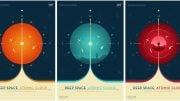
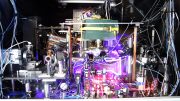

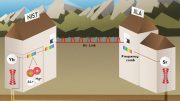
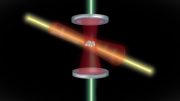

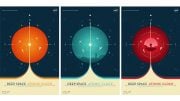
The value of one scientific experiment is not achieved by flaunting its publication in a certain journal.
Nature firmly believe that even without understanding how θ & τ were formed, it can be concluded that they are CP violations. Is it scientific?
Nature firmly believe that even if two objects (such as cobalt-60) that rotate in opposite directions are asymmetrical, they are still two objects that mirror each other. Is it scientific?
Nature oppose to discuss the aforementioned topics. Is it honest?
Their absurd theory leads to absurd scientific research behavior, which has been ongoing. Are they respectable?
Some so-called academic journals are neither scientific nor honest.
Does the author feel honored to publish an article in such a publication?
Today’s physics had entered the dirtiest and ugliest era in the history of human science. They humiliate the public’s wisdom in a grand and dignified manner, without any shame.
Question, Is physics become a hodgepodge of information or will it align information for the future.